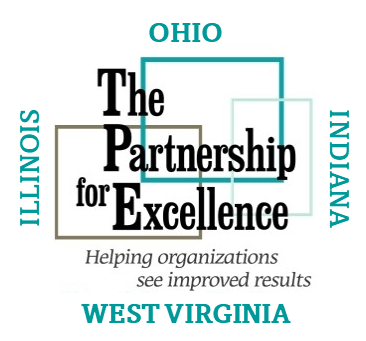Create a Clear Line of Sight
One of the most critical actions an organization can undertake is to align its workforce with its mission, vision, values, and organizational needs. This alignment not only contributes to the organization’s long-term success, but it also fosters a sense of shared purpose and in doing so engages and motivates employees. For some employees, the line of sight from the work they do to the organization’s success is very clear, and to others it can be a bit murky.
Several years ago, I managed a center of technology for a global automotive supplier. The corporation employed a systematic strategic planning process, which included ensuring employees understood how their work contributed to the company’s success. During the annual evaluation process, managers were required to address how each person’s work supported the company’s organizational needs and to ensure individual goals were aligned to corporate objectives. Two of the company’s values were innovation and growth, with a key strategic objective being to achieve a specified percentage of sales from new products.
Aligning the work of the numerous engineers at the technology center, who were engaged in developing new products and processes, with corporate values and goals proved to be relatively straightforward. Consequently, performance evaluations with engineers were marked by meaningful discussions on their contributions to the organization’s success. It was fulfilling to observe their enthusiasm and sense of purpose in the work they undertook.
During the performance evaluation with the maintenance manager, it became apparent that there was a lack of understanding regarding the department's contribution to the organization's strategic initiatives. The maintenance manager remarked that neither he nor his team contributed to the corporation's mission or strategic objectives, stating, "We just mow the grass and maintain the facility; how does this contribute to the company’s success?"
It was evident to me that the maintenance department played a crucial role in supporting the engineers' development of new products and processes. They were responsible for maintaining test equipment essential for validating new products, upkeeping the test track and proving grounds for testing customer vehicles equipped with our products, and ensuring the facility was ready to showcase during visits from customer senior leaders for technology reviews. Additionally, they installed 3D printers and other equipment for prototype development and constructed a virtual reality room for designing and developing manufacturing facilities in a virtual environment.
The maintenance department's work was instrumental in driving the company's long-term success. However, they had difficulty understanding how their responsibilities aligned with the company's mission and strategy. They perceived their role as limited to tasks such as mowing the grass, without recognizing the broader impact of their contributions.
The lesson learned was the importance of leaders creating a clear line of sight from individual work to the organization’s needs. This line of sight is often apparent to employees in roles directly related to the organization’s products or services or who interact with customers. However, it may be less evident to employees in supporting roles such as maintenance and administration. These roles are essential for ensuring smooth operations and contributing to the organization's success, but it can be challenging for individuals in these positions to connect their work to the organization’s strategic objectives.
The Steps toward Mature Processes, as outlined in the Baldrige Excellence Framework®, depict more advanced organizations as possessing aligned and integrated approaches that address their key strategies and goals. These approaches exhibit repeatable processes that undergo regular evaluation and improvement, align with organizational needs and objectives, and are interconnected within a comprehensive performance management system. Since an organization’s workforce is responsible for executing these processes, greater alignment and integration may facilitate employees’ understanding of how their efforts contribute to achieving the organization's objectives.
A primary responsibility of leaders is to demonstrate a commitment to the success of their employees by helping them understand how their work contributes to the organization’s overall success. Here are some actions leaders can take to achieve this.
- Assist employees in clearly understanding the impact of their work on the organization's performance.
- Ensure that the processes you ask employees to carry out align with the organization’s key strategies and goals.
- Hold individuals accountable for achieving high performance and successfully accomplishing goals that are in line with the organization’s mission and strategic objectives.
- Recognize employees when they meet or exceed individual goals that contribute to the organization's success.
- Provide professional development opportunities to help employees comprehend how their work supports organizational needs and to further develop their ability to contribute to the organization’s future success.
Fostering a sense of purpose among all employees, especially those in supporting roles, is crucial for an organization's long-term success. Leaders must bridge the gap between individual tasks and overarching strategic objectives, ensuring that every team member comprehends their significant contribution to the organization's mission. By aligning processes with strategic goals and recognizing and developing talent, leaders can cultivate a motivated workforce dedicated to achieving high performance and moving the organization forward.
Margot L. Hoffman, Ph.D.
President & CEO
The Partnership for Excellence

